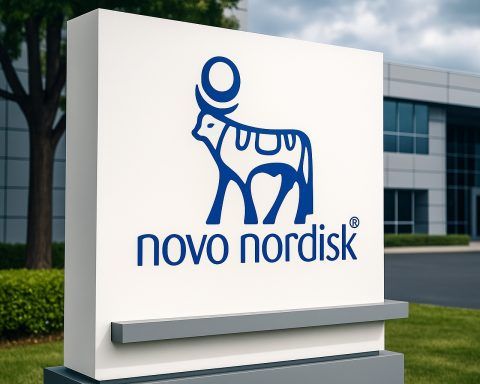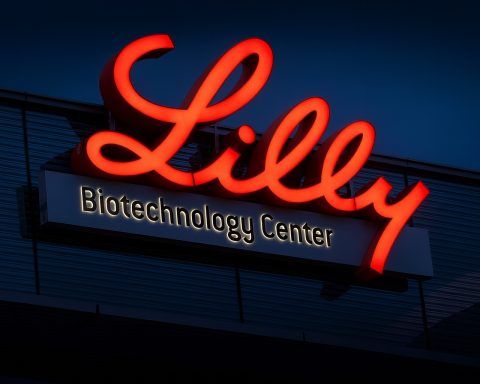CarMax (NYSE: KMX) said its board terminated CEO Bill Nash effective Dec. 1 and named director David McCreight interim CEO. The used‑car giant also issued a downbeat Q3 outlook, sending KMX shares lower on Nov. 6, 2025.
CarMax, Inc. announced sweeping leadership changes and a sharply weaker preliminary outlook for its fiscal third quarter ending Nov. 30, 2025:
- Leadership: Director David McCreight was named interim president & CEO effective Dec. 1. Chair Tom Folliard becomes interim executive chair. In its 8‑K filing, CarMax disclosed that the board terminated the employment of CEO William (Bill) Nash, also effective Dec. 1; CarMax’s press release describes Nash as “stepping down” and leaving the board. A permanent CEO search, led by Russell Reynolds Associates, is underway. [1]
- Guidance: For Q3 FY2026, CarMax expects comparable store used unit sales to fall 8%–12% and EPS of $0.18–$0.36, which includes ~$0.09 of non‑recurring costs tied largely to the leadership change and Customer Experience Center workforce reductions. Management cited declining retail unit sales, sharp wholesale depreciation, and materially higher marketing spend for the quarter. The company reiterated it will report Q3 results on Thursday, Dec. 18, 2025. [2]
- Market reaction: Shares fell about 12% intraday after the news; including today’s move, KMX is down roughly 50% year to date, per Reuters. [3]
Key takeaways
- Board takes the reins: The 8‑K uses the legal term “terminated” for Nash’s departure, while the press release uses “stepping down.” Folliard (CEO from 2006–2016) returns in an executive capacity during the transition—an unusual signal that the board wants hands‑on oversight while it resets strategy. [4]
- Near‑term profit pressure: EPS guidance of $0.18–$0.36 sits well below the ~$0.70 consensus referenced by Reuters, underscoring how quickly margins have compressed amid price cuts and wholesale depreciation. [5]
- Macro and industry context: Used‑vehicle pricing swung sharply in 2025. After a tariff‑driven demand surge early in the year, the market saw rapid depreciation, leaving retailers stuck with higher‑cost inventory and more promotional intensity. Axios reported ~$1,000 per vehicle value declines in a single month over summer. Tight credit has also made financing harder for buyers. [6]
- Cost actions already in motion: The Customer Experience Center cuts referenced in today’s guidance follow ~350 job reductions announced Oct. 29, including 25 roles in the Richmond area. [7]
The details
Leadership and governance
- Interim CEO: David McCreight brings two decades of consumer/retail leadership (Anthropologie/URBN, Under Armour, Lands’ End) and has served on CarMax’s board since 2018, most recently chairing the compensation committee. [8]
- Interim executive chair: Tom Folliard, CarMax’s former CEO, adds day‑to‑day board leadership during the transition. [9]
- Comp package: The 8‑K notes McCreight will receive a $1.2M annual base salary and $3.6M in RSUs (vesting tied to service length) while serving as interim CEO. [10]
Outlook and what’s pressuring results
- Comparable used unit sales:–8% to –12% expected for Q3 FY2026.
- EPS:$0.18–$0.36, which includes ~$0.09 of one‑time costs related to the CEO transition and CEC workforce reductions.
- Drivers: Lower retail unit sales, “sharp depreciation” in wholesale, and a material y/y increase in marketing spend to support CarMax’s new brand positioning.
- CAF trends: CarMax Auto Finance loan‑loss provision trending in line with Q2 expectations.
All points above from today’s release. [11]
Wall Street and stock reaction (Nov. 6)
- Price & volume: KMX dropped roughly 12% intraday after the announcement; Reuters also flagged the stock’s ~50% YTD decline. [12]
- Coverage snapshots: Financial outlets highlighted both the leadership shift and weaker‑than‑expected outlook as drivers of the sell‑off. Barron’s noted shares were recently around the mid‑$30s following the news. [13]
Why this matters
CarMax is the largest U.S. used‑car retailer, so its results are a bellwether for consumer demand, vehicle affordability, and credit availability. Today’s update suggests:
- Inventory & pricing normalization are still rippling through the sector after 2025’s swings in demand and tariffs—putting pressure on unit growth and margins. [14]
- Execution focus (marketing efficiency, sourcing, wholesale pricing, and CAF credit discipline) will be central under interim leadership. [15]
- Governance signaling: Installing an interim CEO and executive chair implies urgency—and creates a short window to stabilize trends before a permanent hire. [16]
What to watch next
- Dec. 18 earnings (before market): CarMax will report full Q3 FY2026 results and host a call—look for updates on comps, margins, wholesale pricing, and early holiday demand. [17]
- CEO search timeline & priorities: Whether the board prioritizes a merchandising/operations veteran or a digital/brand strategist could hint at CarMax’s next chapter. [18]
- Litigation overhang: Multiple shareholder law firms disclosed class‑action filings or investigations this week, alleging misstatements about growth prospects tied to “tariff‑driven” demand. These don’t prejudge outcomes but add headline risk. [19]
- Used‑vehicle pricing & credit: Watch depreciation trends and approval rates; both directly influence conversion, margin, and CAF losses. [20]
Background: how we got here
- Q2 FY2026 (reported Sept. 25): CarMax’s summer quarter was hurt by rapid used‑car value declines, prompting price actions and inventory adjustments. Management characterized the environment as “aggressive” on pricing. [21]
- Cost alignment: The late‑October CEC workforce reductions foreshadowed today’s note about one‑time items in Q3 EPS guidance. [22]
Editor’s note
- Sources for today’s developments: CarMax press release and 8‑K filing (leadership changes, guidance, timing); Reuters (market reaction, consensus context, macro pressures); Barron’s (additional price/action context); NBC12 (October workforce reductions); Axios (industry pricing dynamics). [23]
- This article is for information only and not investment advice.
References
1. www.sec.gov, 2. media.carmax.com, 3. www.reuters.com, 4. www.sec.gov, 5. www.reuters.com, 6. www.reuters.com, 7. www.12onyourside.com, 8. media.carmax.com, 9. media.carmax.com, 10. www.sec.gov, 11. media.carmax.com, 12. www.reuters.com, 13. www.barrons.com, 14. www.reuters.com, 15. media.carmax.com, 16. media.carmax.com, 17. media.carmax.com, 18. media.carmax.com, 19. www.globenewswire.com, 20. www.axios.com, 21. www.axios.com, 22. www.12onyourside.com, 23. media.carmax.com





